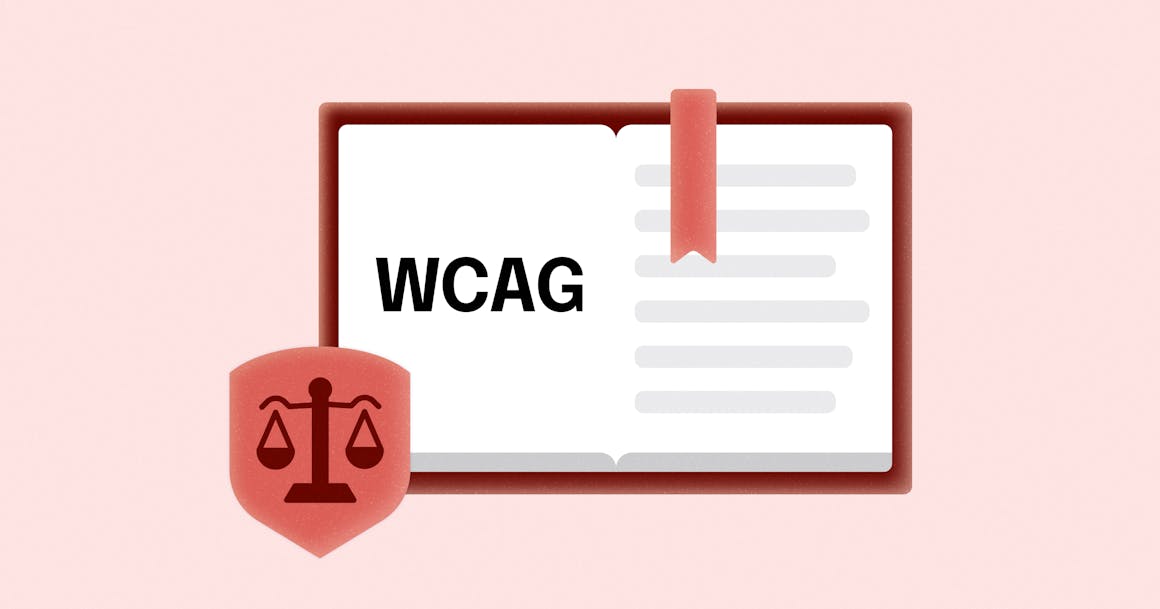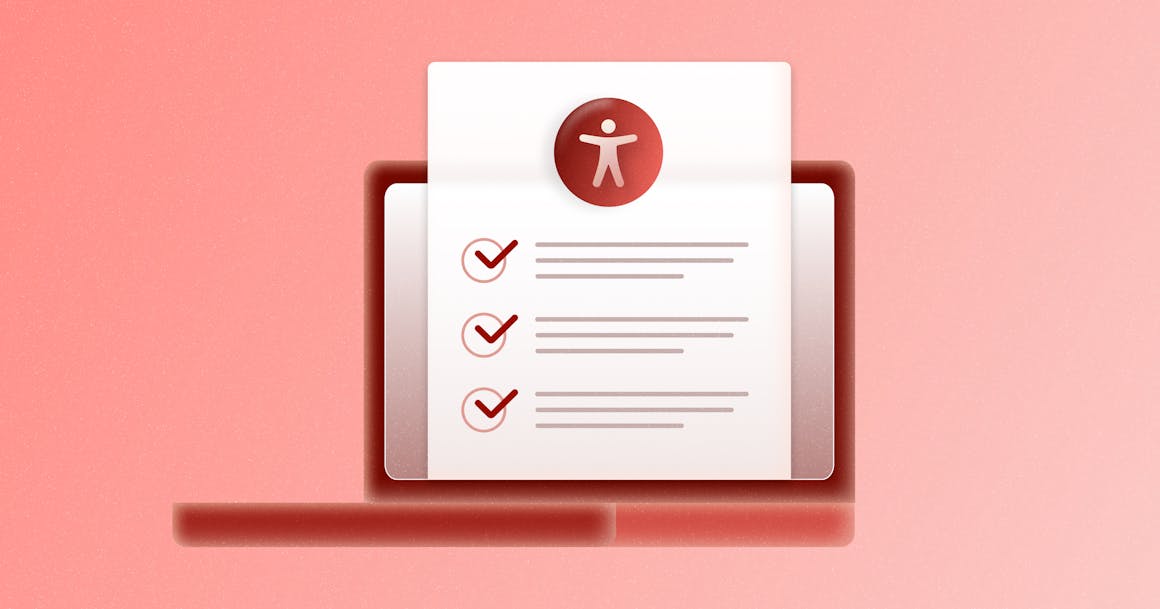Table of Contents
- Why Does Web Accessibility Matter?
- Key Updates to Web Accessibility
- DOJ Publishes New Guidance on Web Accessibility
- European Accessibility Act Extends Accessibility Standards to Private Organizations
- DOJ Strengthens Connection Between ADA and WCAG
- W3C Releases WCAG 2.2
- How Can I Make Sure My Website Is Accessible and Compliant?
Breaking Down the Latest Web Accessibility Compliance Updates


Ready to see AudioEye in action?
Watch Demo
In this blog, we break down some of the latest accessibility laws and guidelines — and discuss how you can deliver an accessible, compliant experience to every website visitor.
“Full and equal enjoyment of services.”
Those six words are at the heart of the Americans with Disabilities Act (ADA) — a civil rights law prohibiting discrimination against people with disabilities.
When most people talk about the ADA, they point to examples of accessibility in the physical world, from wheelchair ramps to Braille elevator buttons. However, not everyone connects accessibility to the digital world — or is aware that the ADA is increasingly being applied to websites and other digital channels.
Between 2019 and 2022, the number of web accessibility lawsuits filed in federal court increased between 12 and 14% annually.
There are plenty of potential reasons for this uptick, from increased awareness of web accessibility laws to people spending more time than ever online.
But no matter the root cause, it’s clear that every organization should have a plan to deliver accessible, inclusive, compliant digital experiences to every user. In this post, we’ll examine some of the latest accessibility laws and guidelines — and share tips on how you can build a mature, robust approach to accessibility within your organization.
Why Does Web Accessibility Matter?
Before we get started, it’s important to have a baseline understanding of what digital accessibility is — and why it’s so important for the 1.3 billion people globally with a disability.
Web accessibility is the practice of designing websites and digital experiences so people with disabilities can easily navigate, consume, and interact with the content.
In other words, web accessibility is about ensuring full and equal enjoyment of services for all users, regardless of ability.
"People with disabilities deserve to have an equal opportunity to access the services, goods, and programs provided by government and businesses, including when offered or communicated through websites.”
Kristen Clarke, Assistant Attorney General for the DOJ’s Civil Rights Division
Although the ADA does not have technical standards for web accessibility, courts have frequently interpreted its provisions to include digital spaces — and pointed to the Web Content Accessibility Guidelines (WCAG) as a standard to follow.
Based on past rulings, the U.S. Department of Justice (DOJ) has identified WCAG conformance (meaning a business voluntarily follows the guidelines) as a way to demonstrate compliance with nondiscrimination laws.

Key Updates to Web Accessibility
In recent years, regulatory bodies like the DOJ and the European Union (EU) have actively worked to strengthen web accessibility regulations. This includes initiatives to update existing laws and introduce new guidelines that reflect technological advances and user behavior.
Here’s a quick recap of four notable updates to accessibility laws and guidelines:
DOJ Publishes New Guidance on Web Accessibility (2022)
In 2022, the DOJ published new guidance to help organizations ensure their websites and digital channels were accessible to people with disabilities. As the DOJ’s first statement on web accessibility in over a decade, the guidance was significant for several reasons.
First, it signaled the DOJ’s ongoing commitment to building a more accessible, equitable future.
“We have heard the calls from the public on the need for more guidance on web accessibility, particularly as our economy and society become increasingly digitized. This guidance will assist the public in understanding how to ensure that websites are accessible to people with disabilities.”
Kristen Clarke, Assistant Attorney General for the DOJ’s Civil Rights Division
Second, it clarified the DOJ’s position that the ADA applies to both the physical and digital worlds. In the section on When the ADA Requires Web Content to be Accessible, the guidance states: “... the Department has consistently taken the position that the ADA’s requirements apply to all the goods, services, privileges, or activities offered by public accommodations, including those offered on the web.”
Calling websites “places of public accommodation” is one of the most significant takeaways from the guidance, as it directly links web accessibility to Title III of the ADA.
European Accessibility Act Extends Accessibility Standards to Private Organizations (2022)
In 2022, Member States of the EU started to adopt the European Accessibility Act (EAA) — a piece of legislation requiring nations to implement universal accessibility standards, follow up on consumer complaints, and verify that public organizations remediate accessibility issues.
The EAA requires Member States to check for compliance with EN 301 549, Accessibility Requirements for ICT Products and Services (PDF), a set of standards incorporating WCAG 2.1 Level AA by reference. In addition to online content, the EAA applies to digital products like smartphones, televisions, and e-readers.
Notably, the EAA applies to any product or service that is sold or used within the Member States, regardless of origin. In other words, even if your business is based in the United States, you must comply with the EAA if you sell to customers in the EU.
DOJ Strengthens Connection Between ADA and WCAG (2023)
In 2023, the DOJ published a Notice of Proposed Rulemaking confirming its intent to update Title II of the ADA to provide government agencies with much-needed clarity on accessibility requirements for websites and mobile apps.
Key points of the proposal include:
- State and local governments must adopt WCAG 2.1 Level AA as the technical standard to follow.
- Government websites and mobile apps would fall under this proposal, including apps provided for government services and programs.
- This rule would apply to public schools, community colleges, and public universities as well as state and local police departments.
Although the proposed rule is focused on Title II of the ADA (instead of Title III, which concerns businesses), it’s another sign that the DOJ considers WCAG to be the de facto standard for all things accessibility — for both public and private enterprise.
W3C Releases WCAG 2.2 (2023)
In 2023, the W3C published the Web Content Accessibility Guidelines (WCAG) 2.2 as its official recommendation after two years of soliciting feedback.
WCAG 2.2 introduced nine new success criteria (and removed one old, obsolete criteria) to the 78 success criteria in WCAG 2.1, for a total of 86 success criteria. Notably, organizations that were previously compliant under WCAG 2.1 may not be compliant under WCAG 2.2 — clarifying the need for organizations to continue checking their websites and digital content against the latest accessibility guidelines.

How Can I Make Sure My Website Is Accessible and Compliant?
When we talk to customers and prospects about accessibility, one of the things we stress is that it’s not something you can do once and check off the list; rather, it requires ongoing effort and attention.
As we noted above, accessibility laws and standards evolve. Websites are constantly updated. And each of these changes can mean that a website or digital experience that was previously compliant is suddenly not.
That’s not to paint a grim picture of accessibility — or your organization’s ability to deliver an accessible experience to every website visitor. Rather, it’s a reminder to prioritize accessibility solutions that let you test early, often, and with expert input.
At AudioEye, we often talk about the gold standard of web accessibility — and why it requires human experts and powerful automation. We’ve built our product and service offerings to support this approach, with industry-leading automated testing and remediation backed by human experts.
Learn how AudioEye provides industry-leading legal protection for customers →
Want to learn more? Check out our latest accessibility compliance guides or schedule a demo to discuss your accessibility needs.
Ready to see AudioEye in action?
Watch Demo
Ready to test your website for accessibility?
Share post
Topics:
Keep Reading

What’s New in WCAG 2.2: Changes and Updates from WCAG 2.1
Meeting WCAG 2.1 requirements doesn’t mean you conform to WCAG 2.2. Find out what’s changed and how to adapt your site or app.
compliance
April 07, 2025

ADA Demand Letter: What It Means & What to Do If You Get One
ADA demand letters are becoming more common. Understand what they are, how to respond, and how to reduce your legal risk moving forward.
compliance
March 28, 2025

Why an Accessibility Widget for Your Website Isn’t Enough — and What to Do Instead
Widgets seem like an easy way to ensure compliance with accessibility regulations, but your site/app needs more than they offer. Here’s how to approach it.
accessibility
compliance
March 25, 2025
